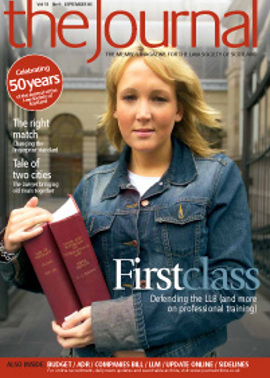Victories for tenants?

Practitioners will be familiar with chapter 14 of The Law of Agricultural Holdings in Scotland (3rd ed), by Lord Justice Clerk Gill, where at para 14.17, in discussing joint tenancies of agricultural holdings, he wrote:
“In modern practice the expression is most commonly used in the looser sense of a tenancy held by a number of individuals pro indiviso. In such a lease the extinguishment of the interest of one joint tenant during the contractual currency does not extinguish the rights of the others.”
Lord Gill continues at para 14.18: “The principal practical significance of a joint tenancy emerges at the contractual ish and during the ensuing period of relocation because at that stage any valid notice of removal given by one joint tenant has the effect of terminating the entire tenancy. This principle results from the basic doctrine of tacit relocation, namely that the consents of all parties to the relocation of the contract are to be implied. If the interest of one joint tenant is terminated after the contractual term, for example through the failure of his executor, if there is no destination to survivors, to transfer it under section 16 of the [Succession (Scotland) Act 1964] there will be a deficiency in the necessary consents and the entire operation of further relocation in respect of the survivors will be excluded”.
In two independent recent cases, the Outer House of the Court of Session (Lord Clarke) in Stephen v Trustees of Cawdor Marriage Settlement Trust, 3 May 2006, and the Divisional Court of the Scottish Land Court in Salvesen v Graham, 25 July 2006, have reached similar decisions, on almost identical facts but by different routes, which break ground in the law of succession to joint tenancies. They also throw new light on the circumstances in which an interest in a joint tenancy remains in being.
Withdrawn consent
In each case, a joint tenancy was held by a father and a grandparent. Father, in each case, predeceased the grandparent; his interest in the lease was acquired by his son. The grandparent then died. The joint interest in the tenancy was transferred to the same son.
Stephen related to two separate tenancies. In one of these there was no written lease. In the other it was not clear whether there had at one time been a written lease, but the parties agreed that the lease was based on tacit relocation. In Graham there was a written lease of 1974, which on the face of it was a lease to a partnership but was treated as a lease to joint tenants, held on tacit relocation.
The landlord, in each instance, argued that the interest which the son had inherited from the grandparent continued to form a separate interest from that which the son had acquired from his father, and sought to terminate the former grandparent’s interest by notice to quit under s 25 of the Agricultural Holdings (Scotland) Act 1991, on the ground that the son was not a near relative successor of the grandparent. The landlord went on to submit that termination of the former grandparent’s interest in the lease withdrew the consent which the landlord contended was required in order to continue a joint tenancy by tacit relocation and that, accordingly, the tenancies themselves were terminated by the operation of the notices to quit served under s 25.
In both cases, the landlords effectively sought to extend the principles expounded by Lord Gill to the termination of a purported joint interest by using s 25.
A single tenancy
In reaching his conclusions, Lord Gill relied heavily on Smith v Grayton Estates Ltd 1960 SC 349 and Coats v Logan 1985 SLT 221, both of which were discussed at some length, and distinguished, by Lord Clarke in Stephen. These decisions were among the several authorities on which the landlord, in particular, relied in Graham.
In both Stephen and Graham, however, the respective courts held that the inheritance of the grandparent’s interest in the tenancy by the son, having previously acquired the other interest from his father, merged the two interests into a single person with the result that the former grandparent’s interest was, by that merger, extinguished. In Stephen, Lord Clarke found that an interest which had already been extinguished was not available to be terminated at a later date. It followed that the tenancies were, at that point, held by the son as sole tenant, fully protected by the Agricultural Holdings (Scotland) Acts. In Graham the Land Court reached the same conclusion having first held that the s 25 notice itself was incompetent, because it was aimed at only one joint tenant’s interest. The rationale was that a tenancy in common is a single tenancy and the joint tenants form a single entity.
Both cases are now subject to appeal.
Alasdair G Fox, Anderson Strathern
In this issue
- Sincere thanks are due
- From the grass roots
- Training solicitors and teaching law
- Survival of the fittest?
- A new print job
- Plenty more besides
- That's settled, then
- East meets west
- A shot in the arm
- Tapping into CPD Online
- Master trainee
- Glitch hunt, not witch hunt
- A caveat on witnesses
- Victories for tenants?
- On your marks...
- Big bill for business
- Ripple effect
- How fair is fair?
- Scottish Solicitors' Discipline Tribunal
- Website reviews
- Book reviews
- Spinning plates
- Sending the right signals






